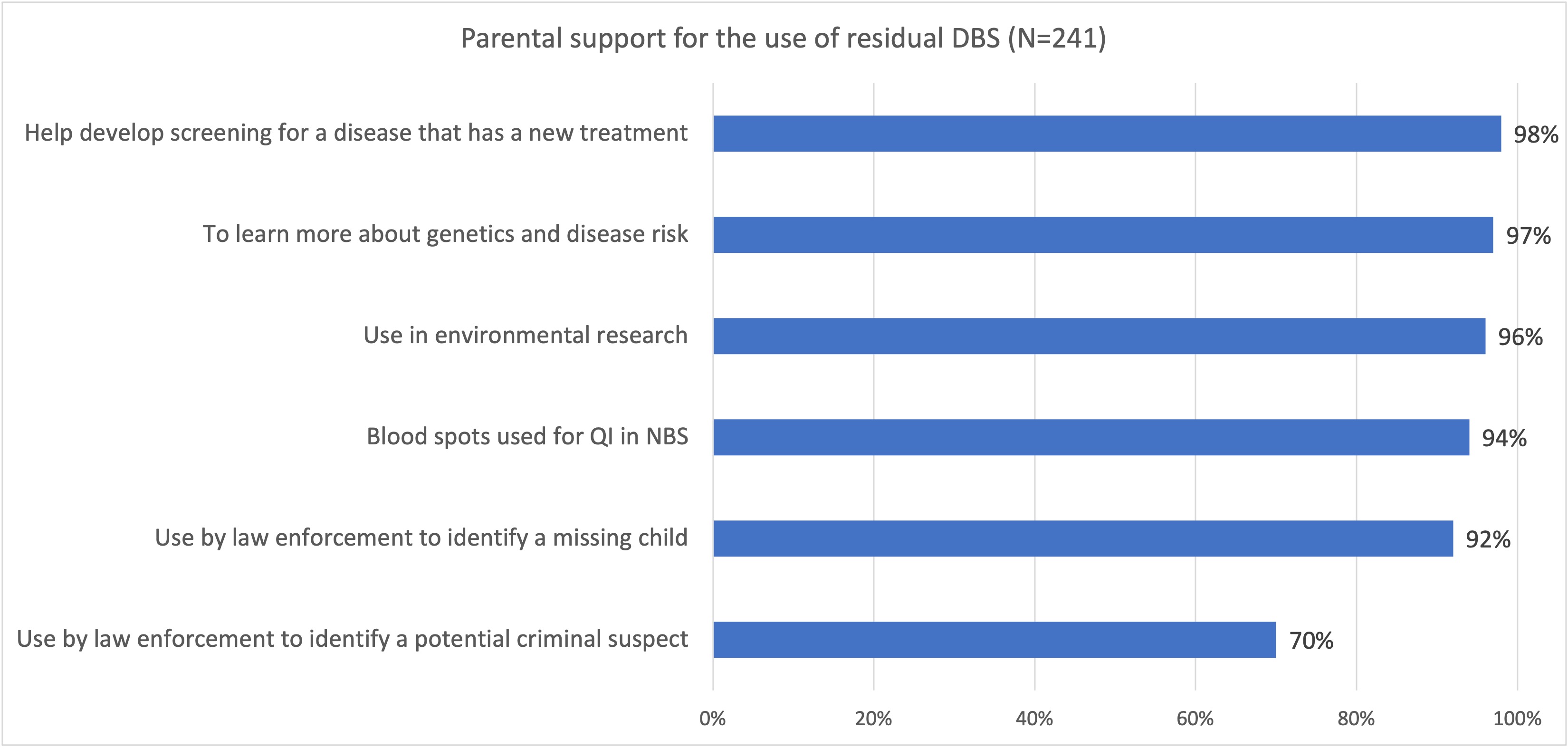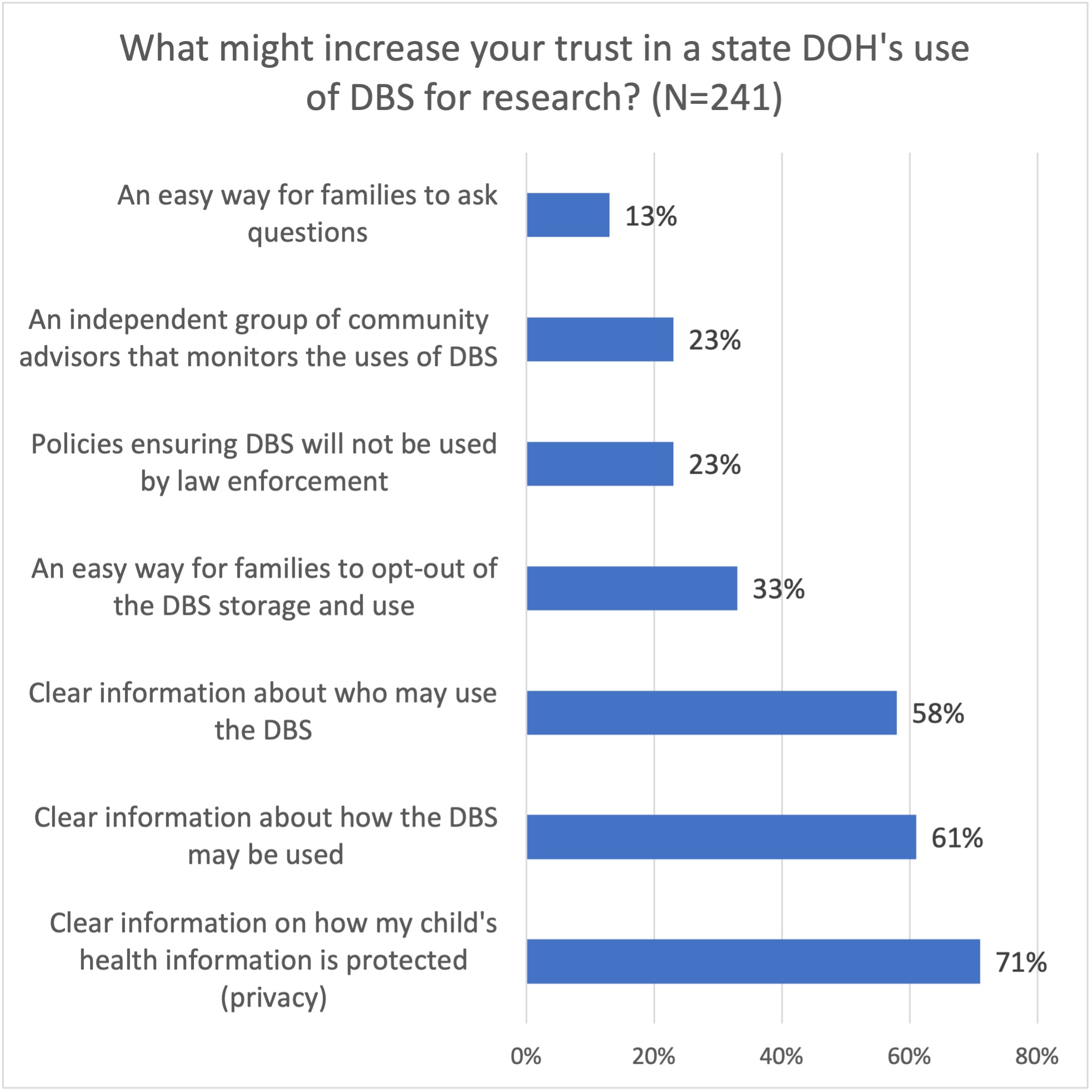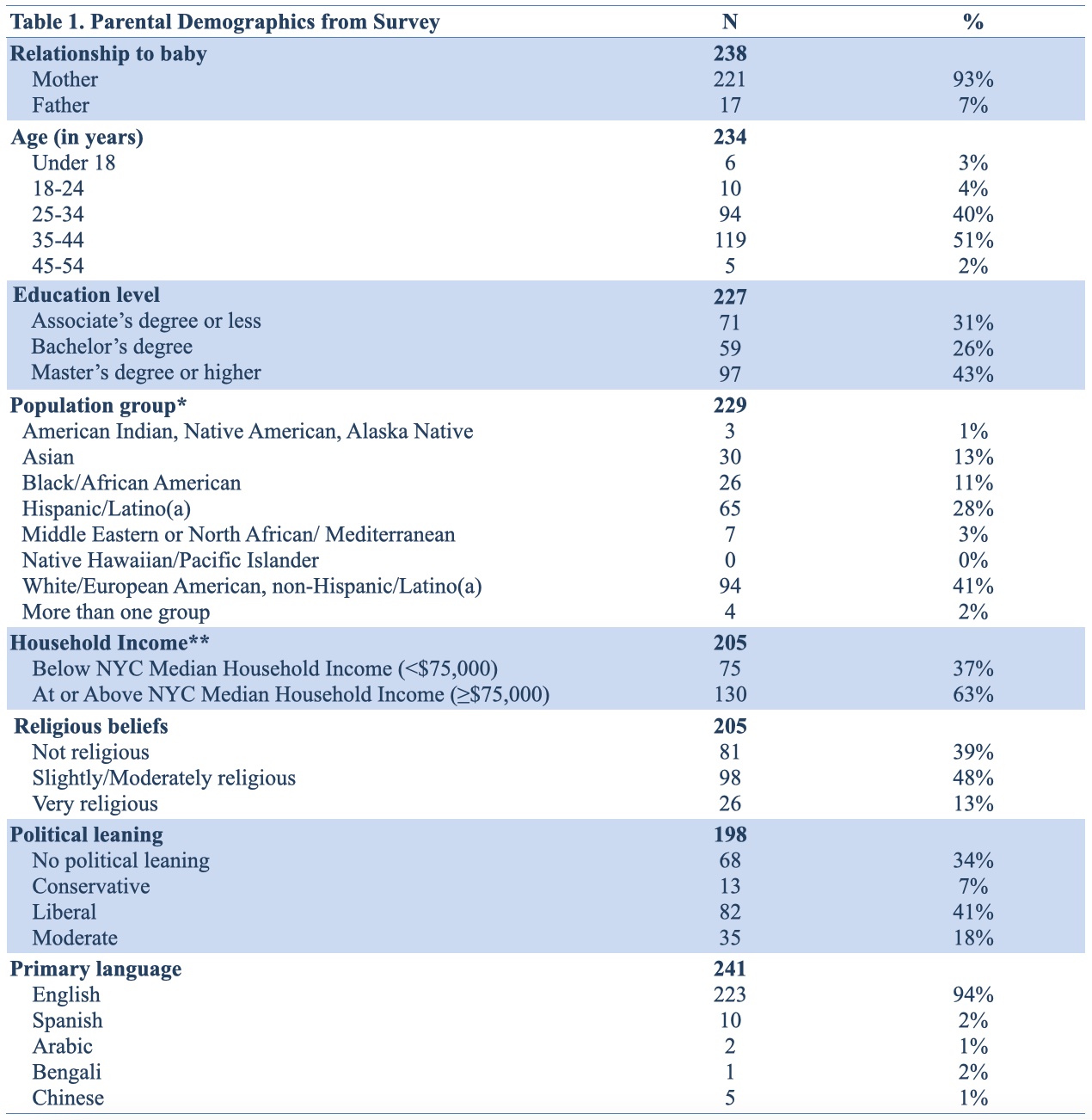Clinical Bioethics
Session: Clinical Bioethics
585 - ScreenPlus parental insights on the uses of residual dried blood spots and the need for transparency
Saturday, April 26, 2025
2:30pm - 4:45pm HST
Publication Number: 585.6442
Katrina Paleologos, Albert Einstein College of Medicine, New York City, NY, United States; Nicole Kelly, The Children's Hospital at Montefiore, Bronx, NY, United States; Megan J. Clarke, Albert Einstein College of Medicine, Bronx, NY, United States; Melissa Wasserstein, Children's Hospital at Montefiore/Albert Einstein College of Medicine, Bronx, NY, United States; Aaron Goldenberg, Case Western Reserve University School of Medecine, Cleveland, OH, United States

Melissa Wasserstein, MD (she/her/hers)
Chief, Division of Pediatric Genetic Medicine
Children's Hospital at Montefiore/Albert Einstein College of Medicine
Bronx, New York, United States
Presenting Author(s)
Background: Residual dried blood spots (DBS) from newborn screening (NBS) testing are an invaluable resource for clinicians and health professionals, the uses ranging from diagnosis, quality improvement (QI), to public health research. With expanding programs and genetic sequencing advancements, DBS aid in enhancing testing protocols and developing new treatments. Most programs store de-identified DBS but can be accessed and re-identified if needed. The use of DBS is a contentious issue and broadening parental engagement can address consent and privacy concerns, with the goal of improving access to screening and newborn care.
Objective: ScreenPlus, a pilot NBS program, aims to assess the ethical, legal, and social implications (ELSI) of NBS practices and policies for complex disorders through surveys and qualitative interviews. The latest survey focuses on parental insights on the uses of DBS and trust in various entities.
Design/Methods: Between May 2021 and October 2024, parents were invited to the ScreenPlus survey series (N=7,928) and 3% completed the DBS survey (N=241). Six scenarios on ways DBS can be used include questions on level of support (4-point Likert), concerns and parental permission (yes/no). Trust in researchers and the state public health department (DOH) is assessed by 3 items (4-point Likert).
Results: Parents strongly support the use of de-identified DBS in the scenarios presented (see Figure 1; range 94-98%). Most parents support re-identified DBS use by law enforcement to identify a missing child (92%); fewer support this use to identify a potential criminal suspect (70%). For all scenarios, parents felt permission is needed to use DBS (range 64-74%). Parents had varying degrees of trust in their health system; 74% trust researchers, 62% state DOH, and 57% trust the state DOH will protect their child’s privacy. The top suggestion for increasing parental trust was to provide clear information on the protections of their child’s health data (71%) (see Figure 2). Parents prefer to be given information on their child’s DBS through discussions with a doctor (78%). Most were mothers (93%) aged 25-44 (90%) and self-reported as non-White (57%) (see Table 1).
Conclusion(s): The report suggests parents support the use of DBS but are concerned about privacy and protections. Pediatricians can enhance their services by informing parents about how their child's DBS is used and accessed. A limitation is parental bias as this cohort consented to expanded NBS. Additional empirical data from parents can shape strategies that build confidence, strengthen NBS frameworks, and encourage parents to screen their babies.
Figure 1. Parental support for the use of residual DBS between May 2021 and October 2024 (N=241).
 Six scenarios on ways DBS can be used includes question on level of parental support (4-point Likert: strongly support, somewhat support, somewhat oppose, strongly oppose). Responses were collapsed into binary outcomes 'support' and 'oppose' for each of the scenarios.
Six scenarios on ways DBS can be used includes question on level of parental support (4-point Likert: strongly support, somewhat support, somewhat oppose, strongly oppose). Responses were collapsed into binary outcomes 'support' and 'oppose' for each of the scenarios.Figure 2. What might increase parental trust in a state department of health’s use of DBS for research? (N=241)
 Seven ways were presented as options that might increase parental trust of DBS use for research. Survey participants could select up to a maximum of three options as their top choices.
Seven ways were presented as options that might increase parental trust of DBS use for research. Survey participants could select up to a maximum of three options as their top choices.Table 1. Parental demographics from dried blood spot survey.
 Survey participants who selected “prefer not to answer” or did not respond (missing) were excluded. *Self-reported Hispanic/Latino(a) was categorized as one group regardless of population group(s) selected. **Recategorized based on NYC Median Household Income (NY Census, American Community Survey 2023).
Survey participants who selected “prefer not to answer” or did not respond (missing) were excluded. *Self-reported Hispanic/Latino(a) was categorized as one group regardless of population group(s) selected. **Recategorized based on NYC Median Household Income (NY Census, American Community Survey 2023).
